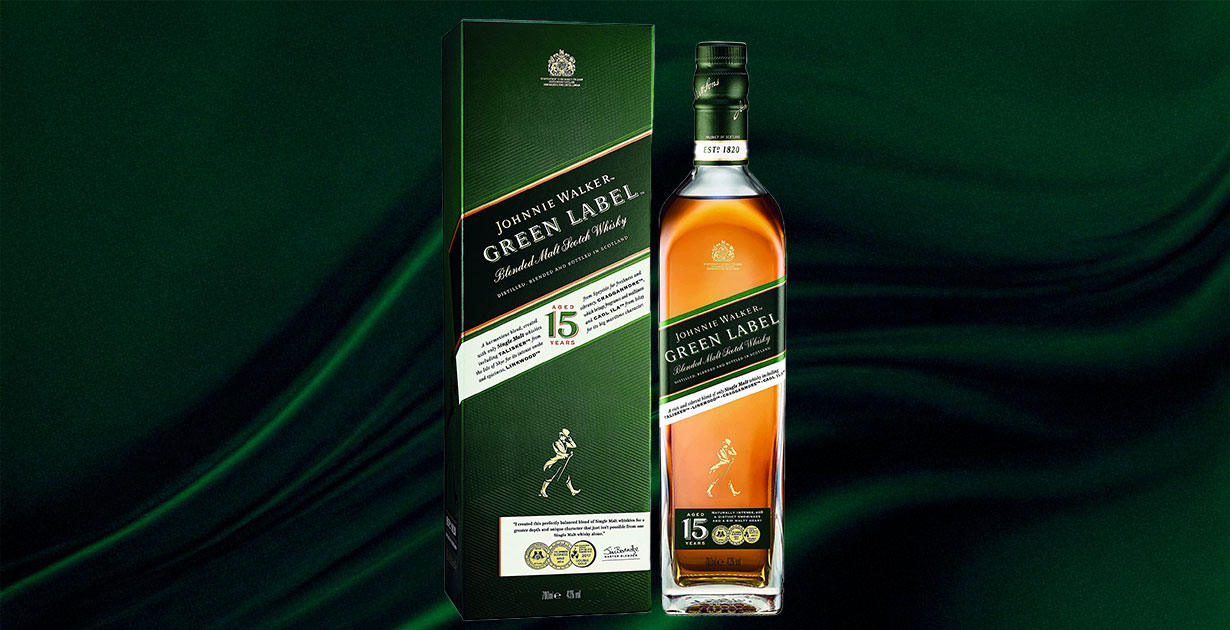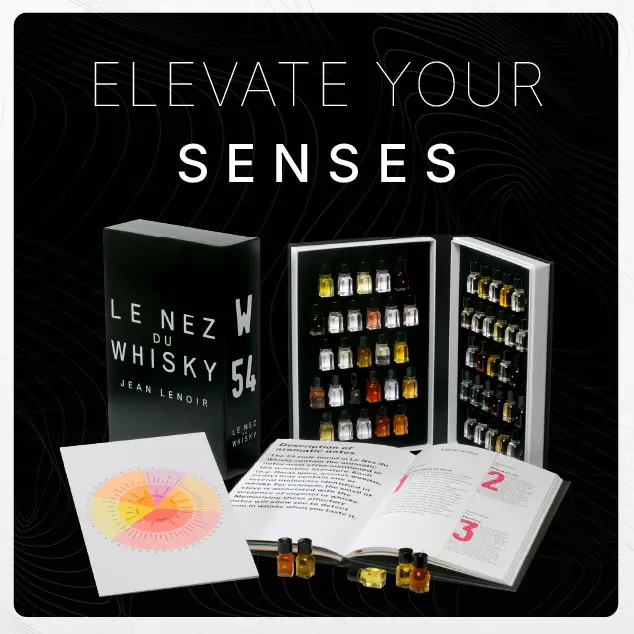
For much of the 20th century, Johnnie Walker was defined by two bottles: the approachable Red Label and the richer, more contemplative Black Label. It was a binary that worked, simple, effective, and globally recognised. But in the late 1990s, a quiet shift began. Amid a growing interest in single malts and more nuanced whisky experiences. Johnnie Walker introduced something different: a green label on the shelf, and a different kind of whisky inside the bottle.
From ‘Pure Malt’ to Johnnie Walker Green Label
Johnnie Walker Green Label first appeared in 1997, though under a different name: Johnnie Walker Pure Malt 15 Year Old. The release was a response to shifting tastes in the whisky world, particularly the rising popularity of single malts in the 1990s. While Johnnie Walker had built its name on expertly blended scotch. This new expression was something else entirely: a blend made exclusively from single malts, with no grain whisky included.
In 2004, the name was changed to Green Label, aligning it with the brand’s established colour-coding system. The move positioned it clearly within the Johnnie Walker family, but also signalled a different kind of experience. One for those looking for the layered complexity of malt whisky, without leaving the world of blends behind.
What’s Inside the Bottle
What sets Green Label apart isn’t just its age statement or colour, it’s the decision to use only single malts in the blend. This makes it a blended malt, a category distinct from both traditional blends (which include grain whisky) and single malts (which come from a single distillery). Every whisky in Green Label is aged for at least 15 years, offering both maturity and consistency.
The blend brings together four key single malts, each chosen for its unique contribution. Talisker adds a peppery, maritime smoke; Caol Ila brings gentle peat and coastal depth. Cragganmore offers richness and structure; and Linkwood rounds it all out with floral sweetness. The result is a whisky that moves from smoky to sweet, earthy to elegant, a balanced composition that feels greater than the sum of its parts.
Why “Green” Fits
The decision to brand this expression as Green Label was more than just a nod to the brand’s established colour scheme. Green, as a colour, carries connotations of nature, purity, and balance, all of which reflect the whisky’s all-malt composition and carefully layered character.
It also subtly positions Green Label as something more organic and considered within the Johnnie Walker range. A blend rooted in the natural qualities of single malts, rather than the broader grain-and-malt combinations typical of blended scotch. In that sense, the colour feels not only appropriate, but quietly intentional.
Johnnie Walker Green Label was well received upon its release, winning praise from critics and casual drinkers alike. Its depth, balance, and accessible complexity earned. It a loyal following, and even accolades, including Whisky of the Year from Jim Murray’s Whisky Bible.
Johnnie Walker Green Label’s Reception, Discontinuation, and Return
Despite its popularity, Green Label was discontinued in many markets in the early 2010s, as Diageo shifted focus to other parts of the Walker portfolio. The move was met with disappointment from fans who had come to see it as a quiet classic. Eventually, that demand proved impossible to ignore. Green Label returned to shelves in 2016, and this time it was here to stay, a permanent reminder that some blends deserve a second act.
The Quiet Classic
In a range dominated by household names like Black and Blue. Green Label remains something of an insider’s choice, less flashy, but deeply rewarding. It bridges the gap between the approachability of blends and the complexity of single malts, offering a layered experience without the need for fanfare.
For those willing to look past the more familiar colours, Green Label offers something rare: a whisky. That quietly defies category, honours tradition and rewards curiosity with every sip.
Read the full article at Johnnie Walker Green Label – Why Its Fans Wouldn’t Let It Die
